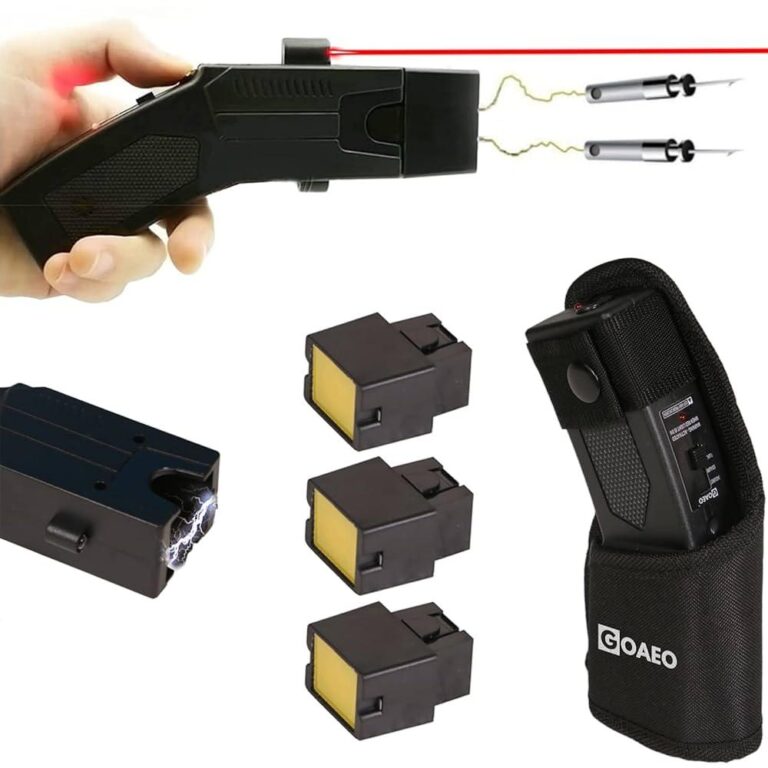Table of Contents
- Understanding the Mechanisms Behind Stun Guns and Handheld Shock Devices
- Safety and Legal Considerations When Choosing Between Stun Guns and Shock Devices
- Effectiveness in Self-Defense Scenarios: What Experts Recommend
- Maintenance Tips and Best Practices for Longevity and Reliability
- Future Outlook
Understanding the Mechanisms Behind Stun Guns and Handheld Shock Devices
At the core of both stun guns and handheld shock devices is the principle of delivering a high-voltage, low-current electrical charge designed to disrupt voluntary muscle control temporarily. However, the way this electrical pulse is generated and applied differs significantly between the two. Stun guns typically use direct contact probes that must touch the target to deliver the shock, causing neuromuscular incapacitation by overwhelming the central nervous system. The electrical pulse interferes with the communication between muscles and the brain, leading to temporary immobilization. This mode of action relies heavily on close proximity and physical contact, which means the effectiveness is often dependent on precise targeting.
In contrast, handheld shock devices such as tasers employ a more sophisticated mechanism that fires wired darts to deliver an electrical current remotely. This ranged approach enables the user to incapacitate a threat from a safer distance, generally up to several feet away. Upon contact, these darts transmit a series of electrical pulses causing involuntary muscle contractions and pain compliance. The electrical output often includes multiple waveform patterns optimized for disrupting motor control without causing lasting harm. Key features of these devices include:
- Target-specific disabling: The electrical charge targets specific muscle groups for maximum effect.
- Built-in safety mechanisms: Systems to prevent accidental discharge and overuse.
- Rechargeable power sources: Advanced batteries for sustained operational readiness.
Safety and Legal Considerations When Choosing Between Stun Guns and Shock Devices
When it comes to personal protection tools like stun guns and handheld shock devices, understanding their legal status is crucial to avoid unintended consequences. These items are regulated differently depending on your location, and what may be permissible in one state or country could be restricted or even illegal in another. Beyond legality, responsible use is paramount. Both devices deliver an electric shock that can incapacitate an attacker temporarily, but improper handling can cause unintended injury to yourself or others. Ensuring compliance with local law enforcement guidelines and receiving adequate training will significantly reduce potential risks.
Key factors to consider include:
- Age restrictions: Many jurisdictions impose minimum age requirements for purchasing or carrying these devices.
- Permit requirements: Some places require a permit or license to carry stun or shock weapons publicly.
- Usage limitations: Restrictions may exist around where these devices can be used or carried, such as schools, government buildings, or airports.
- Battery and power limits: Legal limits on the voltage or amperage output of devices to prevent excess harm.
By carefully researching these considerations, you can confidently select a device that aligns with your safety needs and adheres to legal standards without risking fines or confiscation.
Effectiveness in Self-Defense Scenarios: What Experts Recommend
When it comes to neutralizing threats quickly and effectively, experts agree that both stun guns and handheld shock devices serve invaluable roles in self-defense. However, their effectiveness often depends on key situational factors. Stun guns deliver a high-voltage shock upon direct contact, which can incapacitate an attacker for several crucial seconds, giving you a critical moment to escape or call for help. Their straightforward design and powerful output make them ideal for close-quarter encounters where immediate physical contact is possible.
On the other hand, handheld shock devices, which may include tasers or more compact variants, often offer additional tactical advantages such as extended reach through projectile capabilities or specialized targeting features like laser sights. Experts highlight several considerations for maximizing the effectiveness of these tools:
- Training and familiarity with device operation to ensure quick deployment.
- Understanding legal restrictions and safe usage protocols.
- Choosing a device that suits your typical scenarios, whether home defense or personal carry.
- Maintaining the equipment in optimal condition for reliable performance.
Maintenance Tips and Best Practices for Longevity and Reliability
To ensure your stun gun or handheld shock device performs at its best, regular upkeep is essential. Start by cleaning the exterior with a soft cloth free of abrasive materials to avoid damaging the casing or electrical contacts. Periodically check the electrodes for corrosion or buildup, as these can impede the electrical discharge and reduce effectiveness. Keeping the device stored in a cool, dry place away from direct sunlight will protect the internal components from environmental damage. Always remove batteries if the device will be unused for an extended period to prevent leakage and corrosion.
Adopt a consistent charging routine to maintain battery health and device reliability. Avoid overcharging by unplugging once fully charged, and use manufacturer-approved chargers to prevent electrical faults. When handling your device, consider the following best practices:
- Perform functionality tests as recommended, using a non-lethal test mode if available.
- Inspect safety features regularly to ensure locks and triggers are working correctly.
- Replace batteries promptly when the device shows low power indications.
- Consult the user manual for model-specific maintenance and recommended servicing intervals.
Future Outlook
In conclusion, understanding the distinctions between stun guns and handheld shock devices is crucial for making an informed choice about personal safety tools. Each offers unique advantages and limitations, from power delivery to ease of use, that can significantly impact their effectiveness in real-world situations. By carefully considering your specific needs, legal constraints, and intended use, you can select the device that best aligns with your safety goals. Stay informed, stay prepared, and prioritize your security with the right knowledge and equipment.Check Our Other Blogs
- StunGun – Your Trusted Source for Stun Guns, Laws, and Self-Defense Tips
- PepperSprayLaws – Your Trusted Resource for Pepper Spray Information
- StunGunLaws – Your Trusted Guide to Stun Gun Legality and Safety





